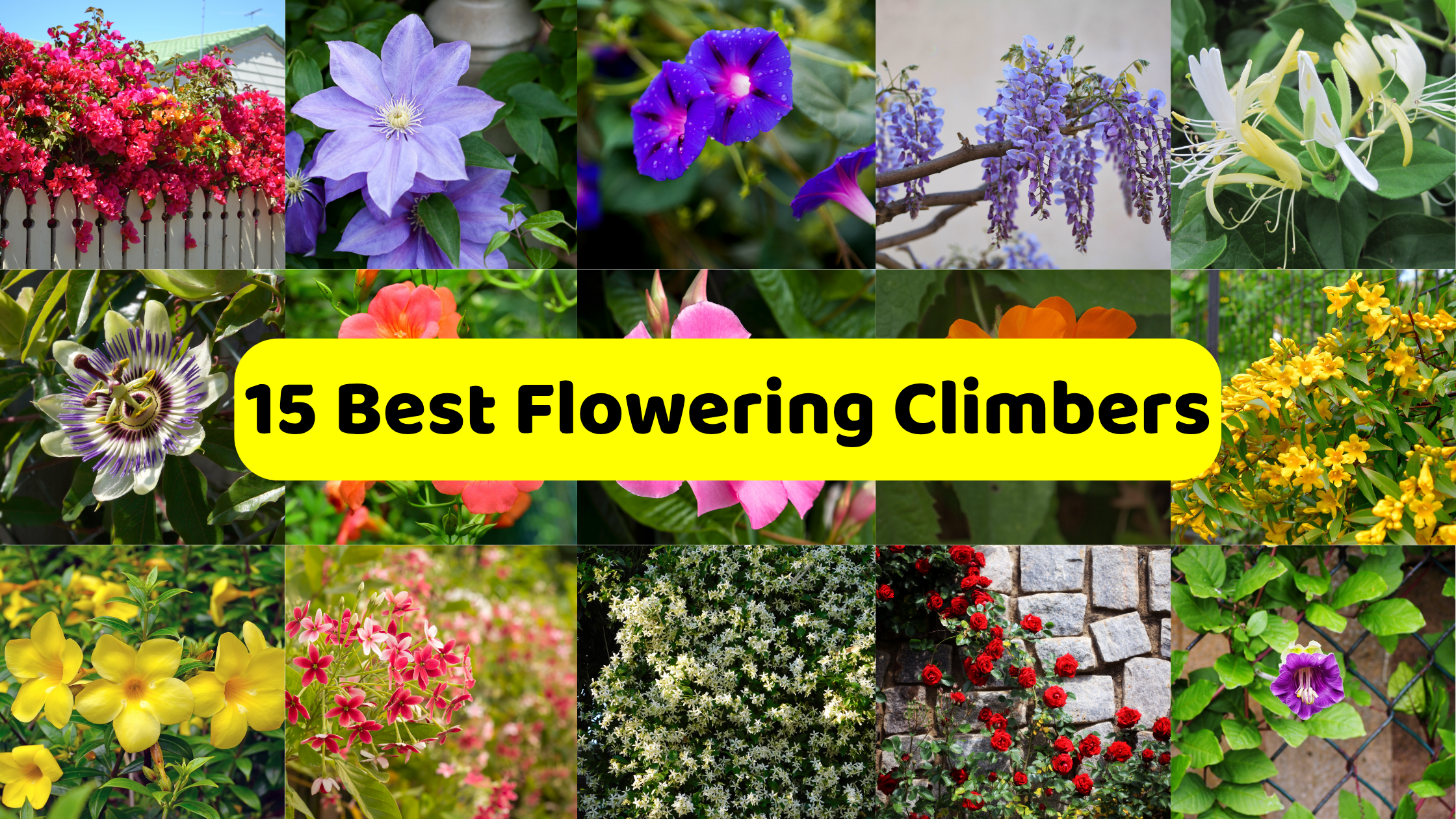Table of Contents
Introduction
Imagine this: A beautiful flowering vine climbing gracefully from the ground to the rooftop. The sweet fragrance of its blossoms fills the air, while vibrant flowers sway gently in the breeze on your balcony. Sounds magical, doesn’t it?
Ever dreamt of having a flowering climber in your Indian home or garden and are now ready to turn that dream into reality? If so, you’re in the right place.
Flowering climbers are a wonderful way to add vertical charm and vibrant color to walls, fences, trellises, and railings. These plants don’t just grow they climb, bloom, and transform dull corners into stunning floral displays.
Thanks to India’s diverse climate, many flowering climbers thrive year-round, offering blooms across different seasons. Whether you’re looking to attract butterflies, cover an unsightly wall, or simply enjoy fragrant blossoms, there’s a flowering climber for every space and purpose.
In this blog, we bring you 15 Best flowering climbers in India complete with their key features, growing tips, and benefits. We’ve also grouped them into useful categories based on light requirements, space availability, fragrance, blooming season, and more at the end of the blog to help you choose the perfect one for your garden or balcony.
So, without further delay, let’s dive in!
15 Best Flowering Climbers in India
Bougainvillea
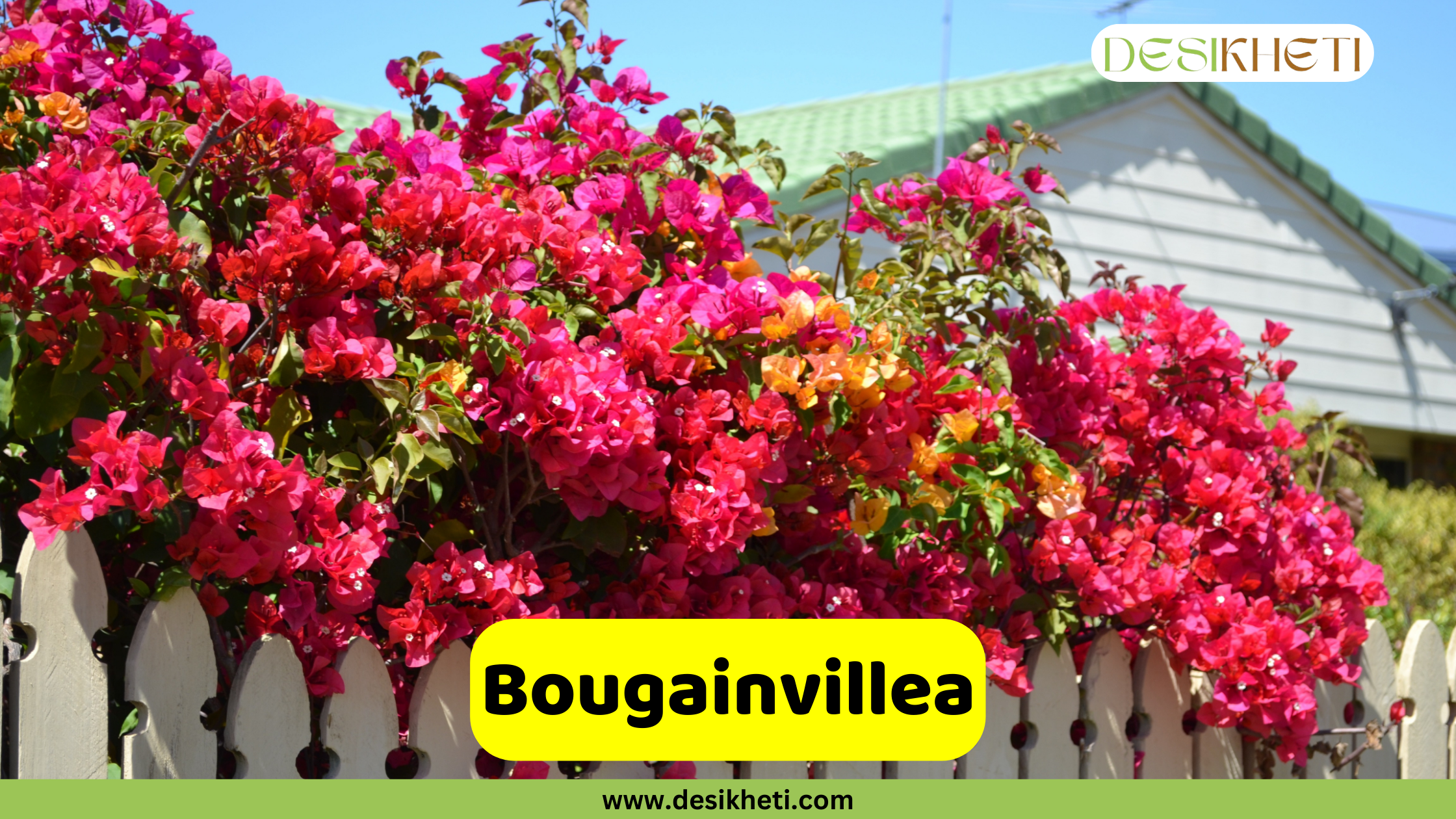
Botanical Name: Bougainvillea glabra
Bougainvillea is a hardy, woody climber known for its vibrant, papery bracts that come in bright shades of pink, red, orange, and purple. It is drought-tolerant and thrives in a wide range of Indian climates. This plant blooms almost throughout the year, especially in sunny and dry conditions, making it a popular choice for adding long-lasting color to gardens and landscapes.
Uses and Benefits:
- Ideal for decorating fences, boundary walls, and pergolas
- Excellent for covering large vertical areas quickly
Clematis
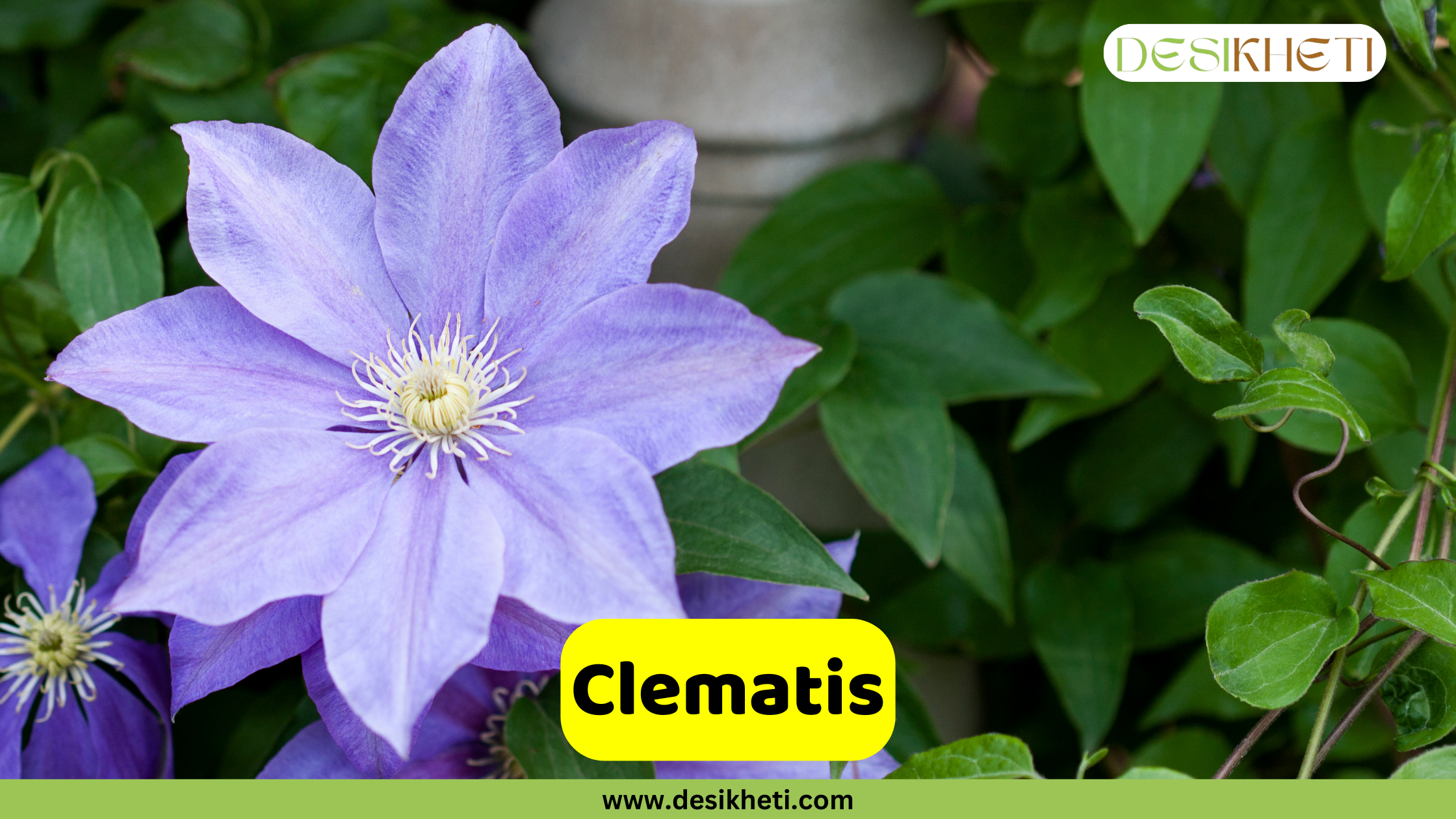
Botanical Name: Clematis spp.
Clematis is a beautiful twining vine known for its large, showy flowers that bloom in many colors including purple, white, pink, and blue. It adds vertical height and elegance to gardens. Clematis usually flowers in spring and summer, depending on the species. It grows best in full sun to partial shade, making it adaptable to various garden spots.
Uses and Benefits:
- Perfect for trellises, arches, pergolas, and vertical garden walls
- Supports pollinators like bees and butterflies
- Suitable for container gardening on balconies or patios
Morning Glory
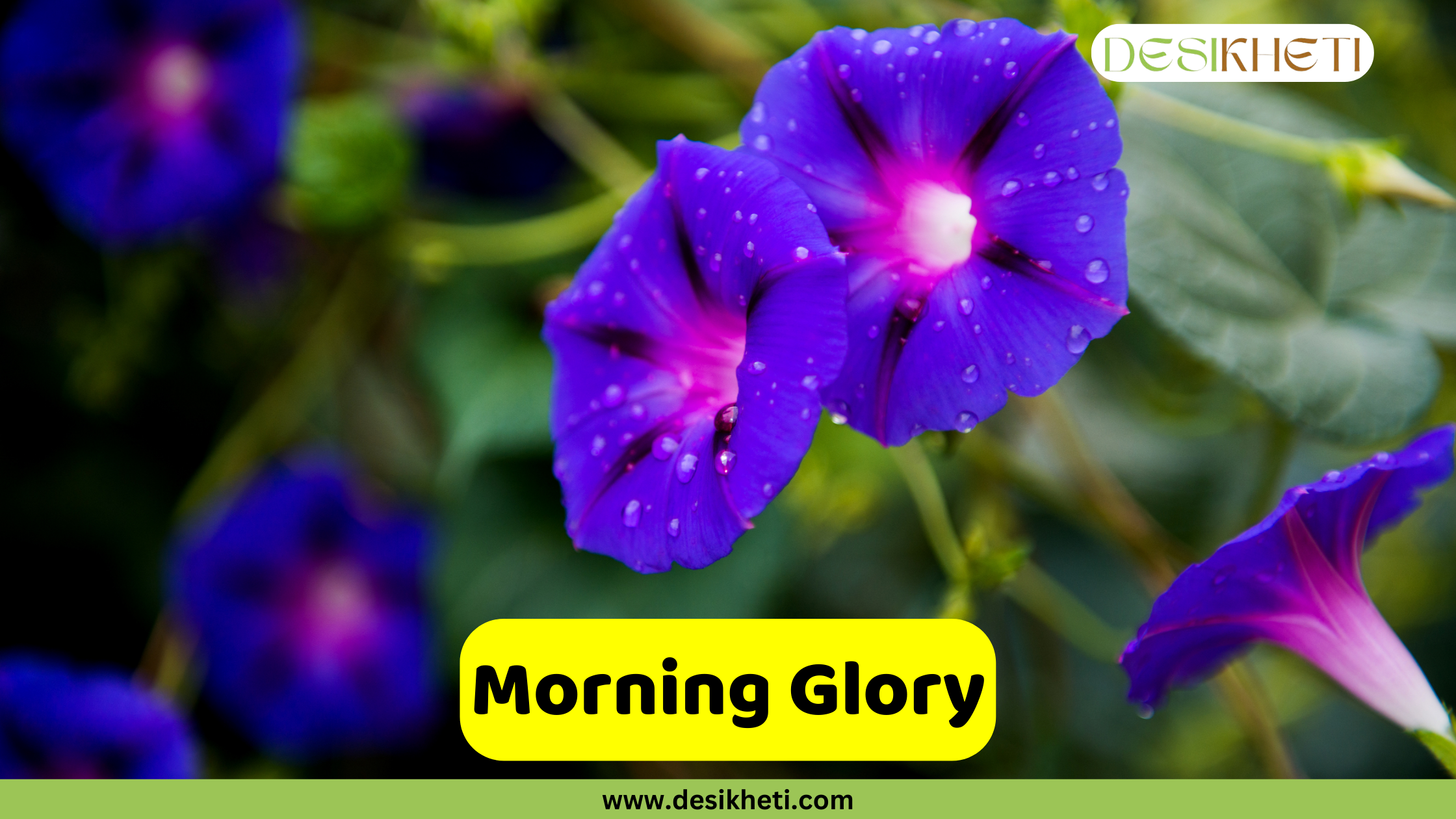
Botanical Name: Ipomoea spp.
Morning Glory is a fast-growing annual vine with delicate, trumpet-shaped flowers that open in the early morning and close by afternoon. The flowers come in shades of blue, purple, pink, and white. It thrives in full sun and blooms profusely during the warm months, especially in summer. This climber is easy to grow and provides quick coverage for fences and trellises.
Uses and Benefits:
- Provides quick ground or vertical coverage in gardens
- Attracts pollinators such as bees and butterflies
- Low maintenance
Wisteria

Botanical Name: Wisteria sinensis / Wisteria floribunda
Wisteria is a vigorous, woody climbing vine known for its stunning cascades of fragrant flowers, usually purple or white. It blooms from spring to early summer, producing dense clusters of flowers that create a spectacular display. It prefers full sun and fertile, well-drained soil to flourish. However, it can take several years to begin blooming, especially if grown from seed.
Uses and Benefits:
- Provides shade and privacy when grown over structures
- Attracts pollinators like bees
Honeysuckle
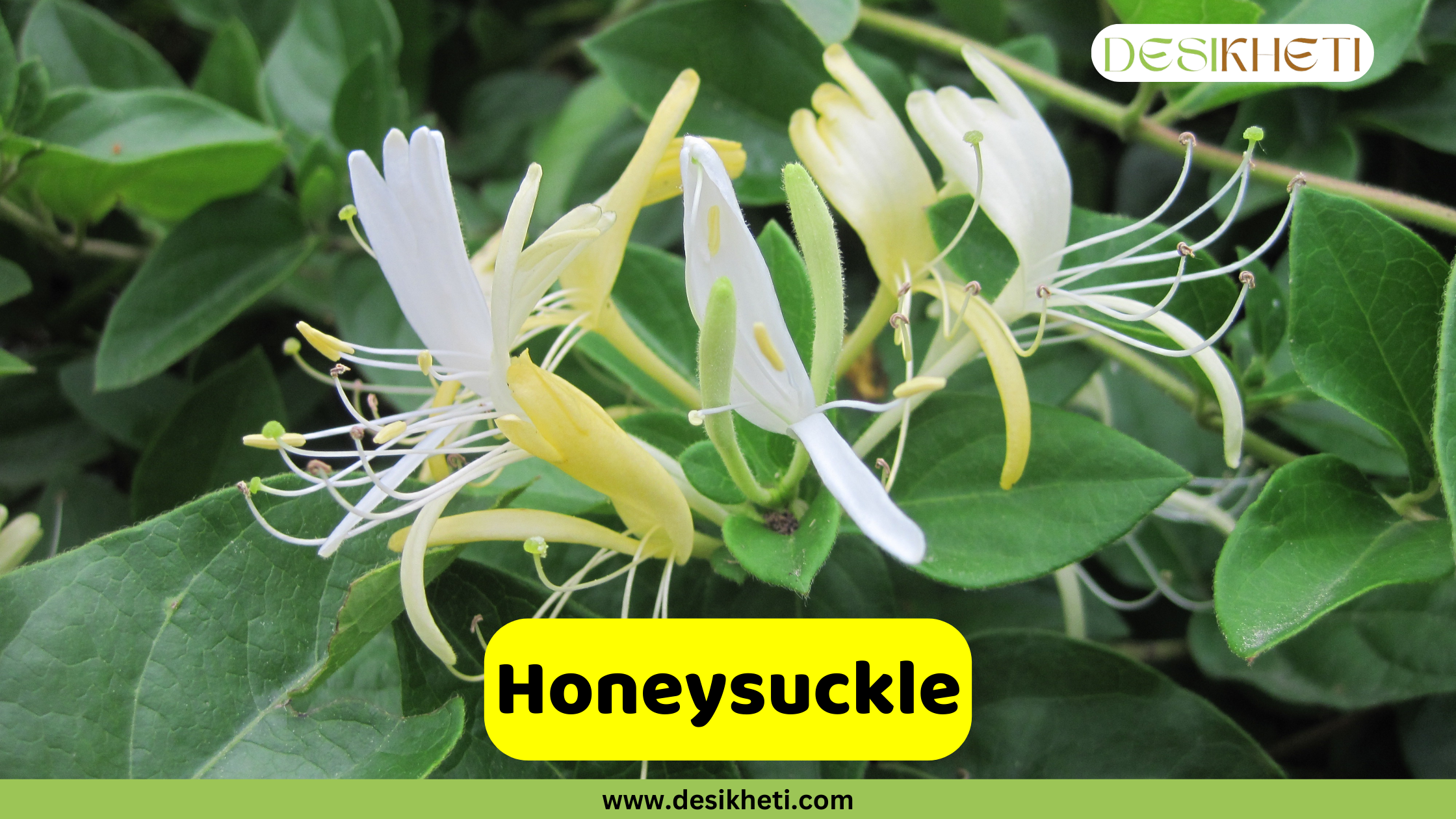
Botanical Name: Lonicera spp.
Honeysuckle is a sweetly scented climber featuring tubular flowers in colors like red, yellow, or white. It blooms primarily from late spring through summer. This climber thrives in full sun to light shade and prefers moist, well-drained soil. It is often used for natural privacy screens due to its dense foliage.
Uses and Benefits:
- Serves as a natural privacy screen or windbreak
- Fragrant flowers add sensory appeal to gardens
Passion Flower
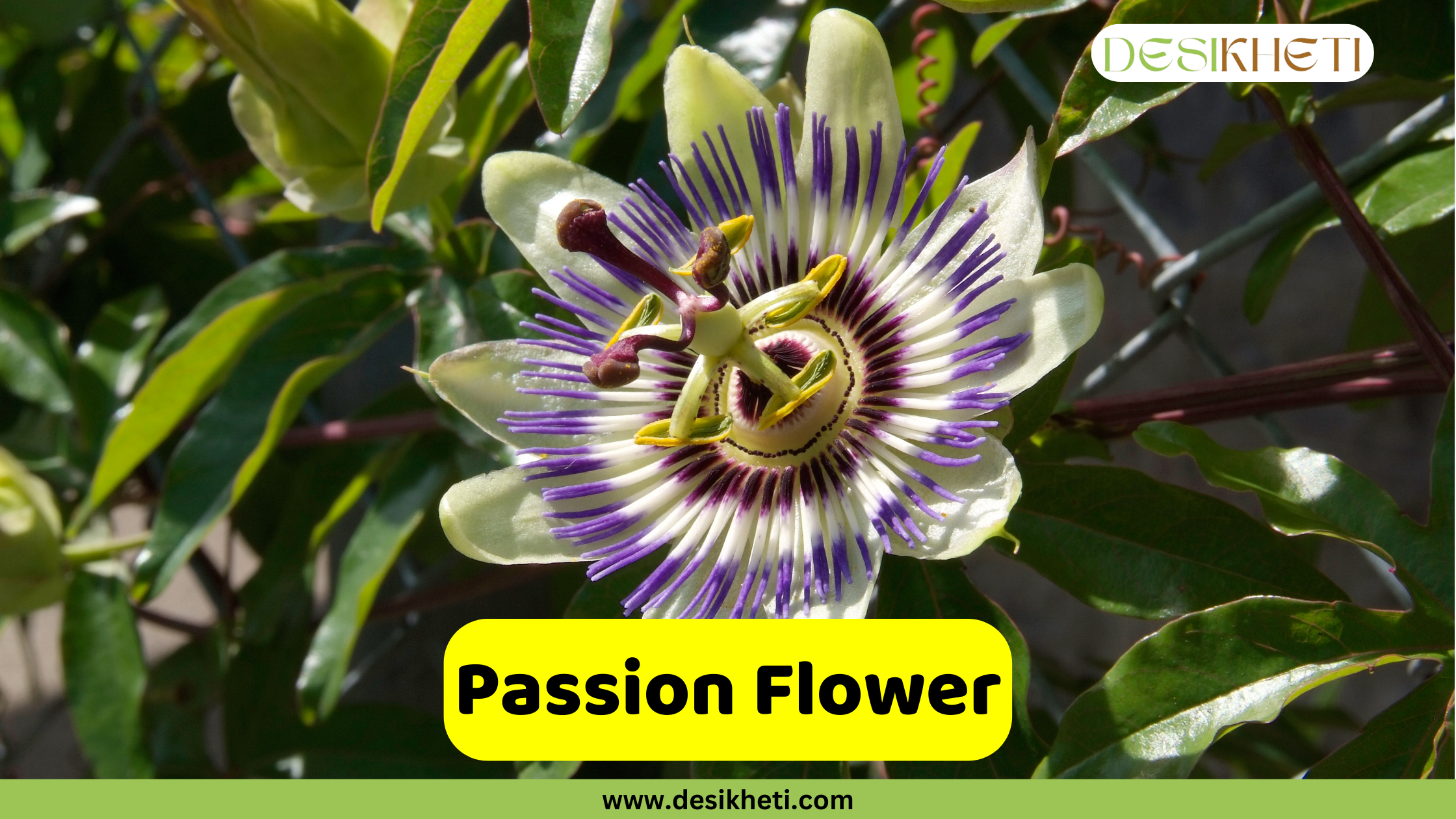
Botanical Name: Passiflora spp.
Passion Flower is an exotic-looking vine with uniquely patterned flowers that often appear like intricate artwork. Some varieties produce edible passion fruits. It blooms mainly in summer and autumn, thriving in full sun to partial shade and rich, moist, well-drained soil. This plant is valued for its ornamental beauty as well as its fruit and medicinal uses.
Uses and Benefits:
- Suitable for balcony railings, trellises, and fruit fences
- Produces edible fruits with nutritional benefits
Trumpet Vine
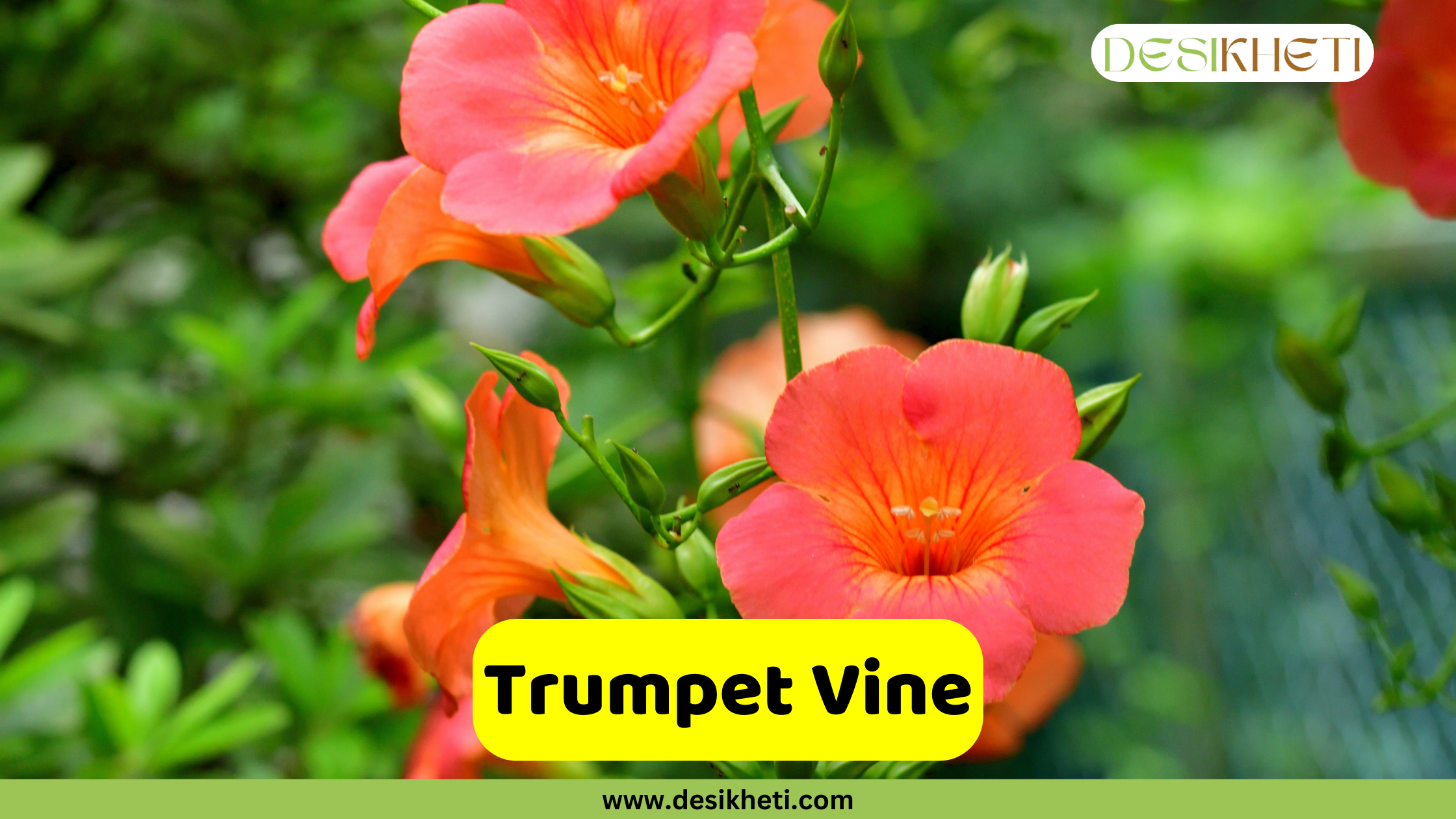
Botanical Name: Campsis radicans
Trumpet Vine is a strong, fast-growing climber with bright, trumpet-shaped flowers in shades of orange to red. It generally blooms in summer. The plant is hardy and requires minimal care once established. Its vigorous growth makes it ideal for quickly covering pergolas and fences.
Uses and Benefits:
- Provides quick and dense vertical coverage
- Low maintenance
Mandevilla
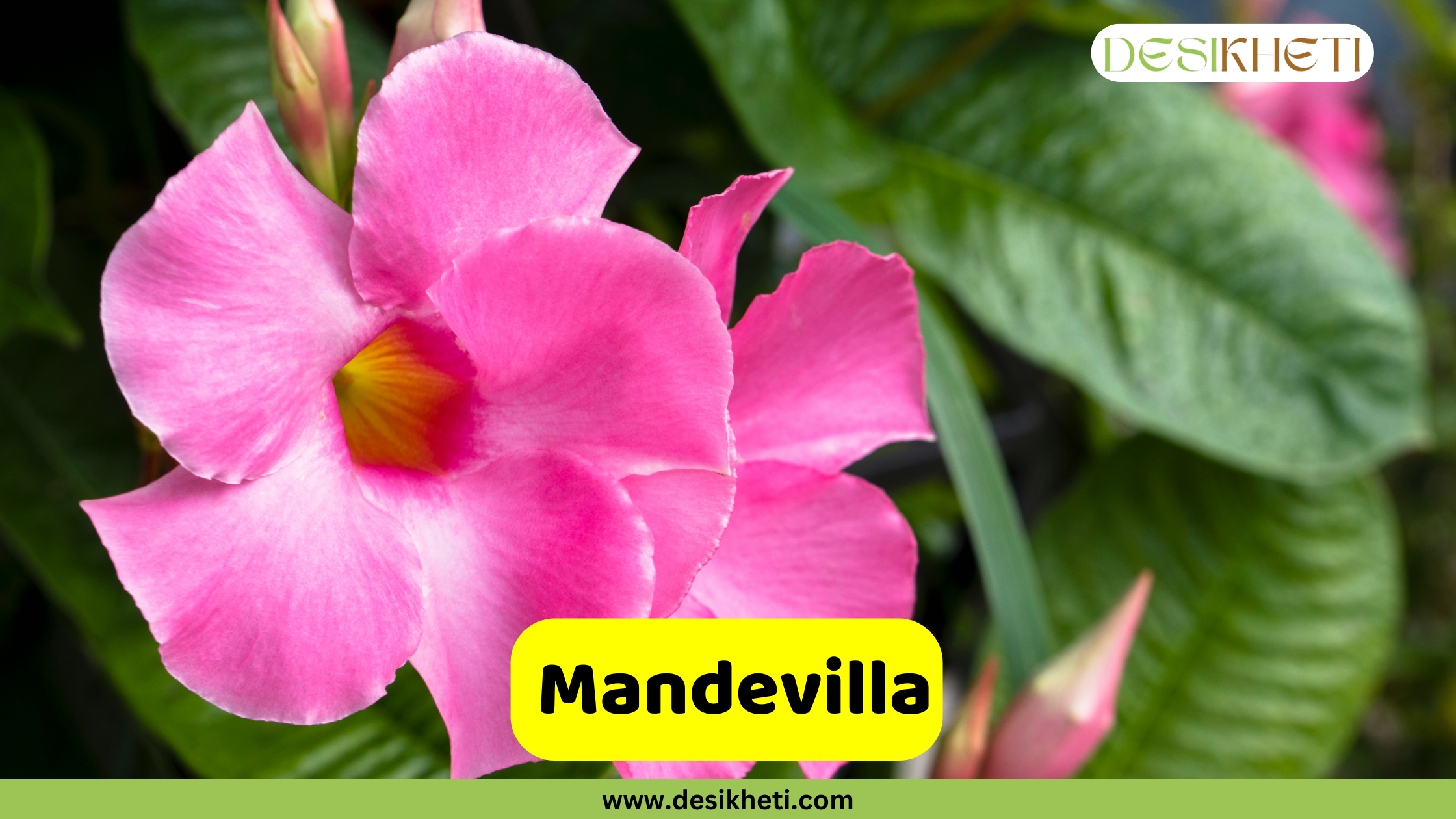
Botanical Name: Mandevilla spp.
Mandevilla is a tropical vine known for its large, trumpet-shaped flowers that appear in beautiful shades of red, pink, and white. It adds a lush, tropical look to any garden or balcony. This climber blooms profusely during the warmer months and prefers full to partial sun.
Uses and Benefits:
- Perfect for patio containers and balcony trellises
- Adds vibrant tropical flair to garden designs
Black-eyed Susan Vine
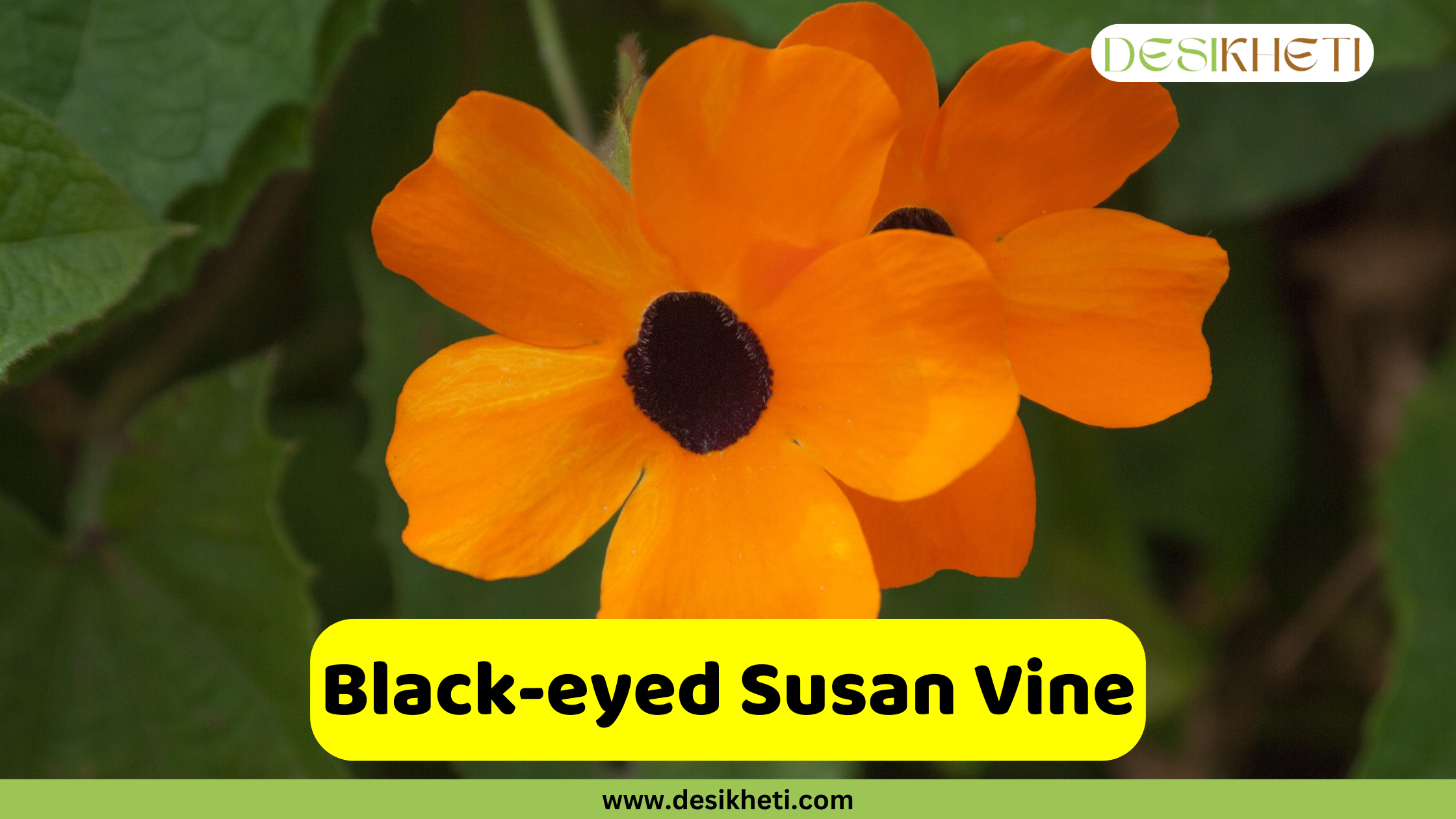
Botanical Name: Thunbergia alata
The Black-eyed Susan Vine is a compact, fast-growing climber with bright yellow or orange flowers featuring a distinctive dark center, resembling an eye. It blooms mainly in summer and early autumn. The plant grows well in full sun to partial shade and prefers well-drained soil. Its cheerful flowers make it a favorite for adding lively color to smaller spaces.
Uses and Benefits:
- Ideal for hanging baskets, railings, and window boxes
- Suitable for garden borders and trellises
- Quick coverage for fences and balconies
- Attracts pollinators like bees and butterflies
Carolina Jessamine
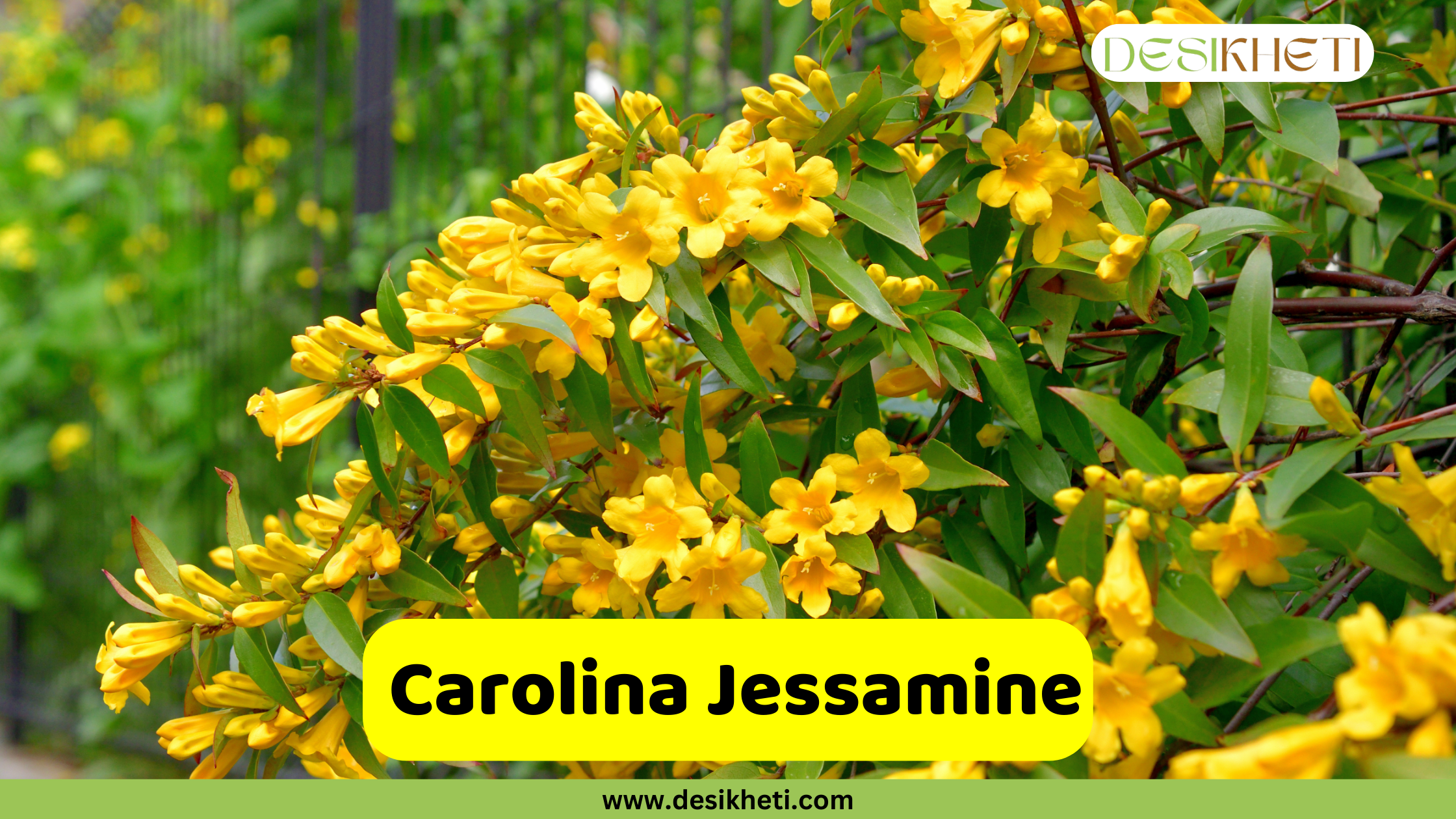
Botanical Name: Gelsemium sempervirens
Carolina Jessamine is an evergreen climber recognized for its bright yellow, fragrant, trumpet-shaped flowers. It blooms in early spring, adding a splash of color after winter. This elegant vine prefers full sun to part shade. It is low maintenance and highly ornamental.
Uses and Benefits:
- Early blooming adds spring color to gardens
- Provides natural screening and shade
Allamanda
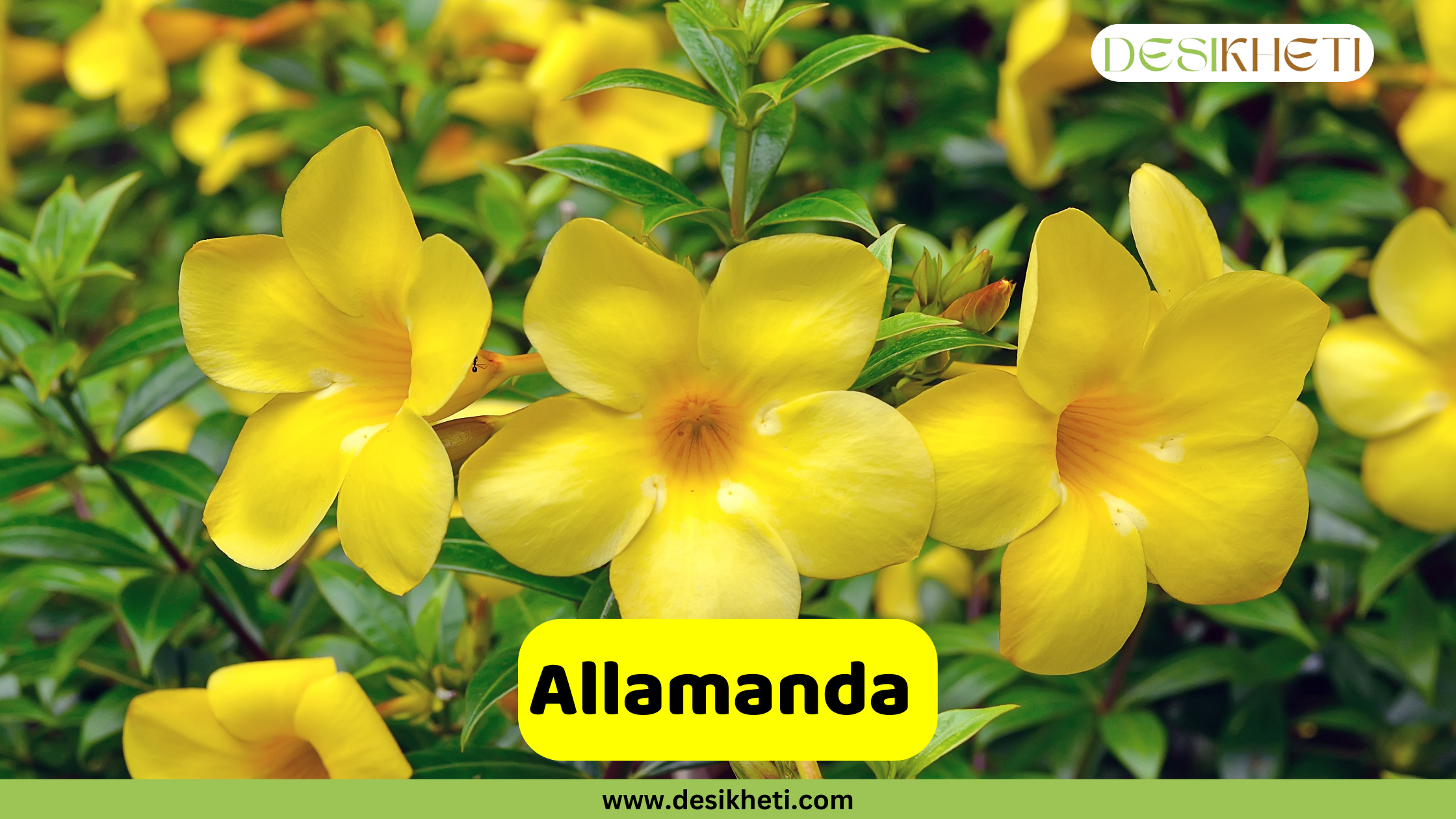
Botanical Name: Allamanda cathartica
Commonly known as Golden Trumpet, Allamanda is a semi-climbing shrub that produces large, bright yellow flowers. It blooms profusely in summer and thrives in full sun and rich, well-drained soil.
Uses and Benefits:
- Suitable for fences, trellises, and porch sides
- Popular in tropical landscaping and garden borders
- Attracts butterflies and other pollinators
Rangoon Creeper
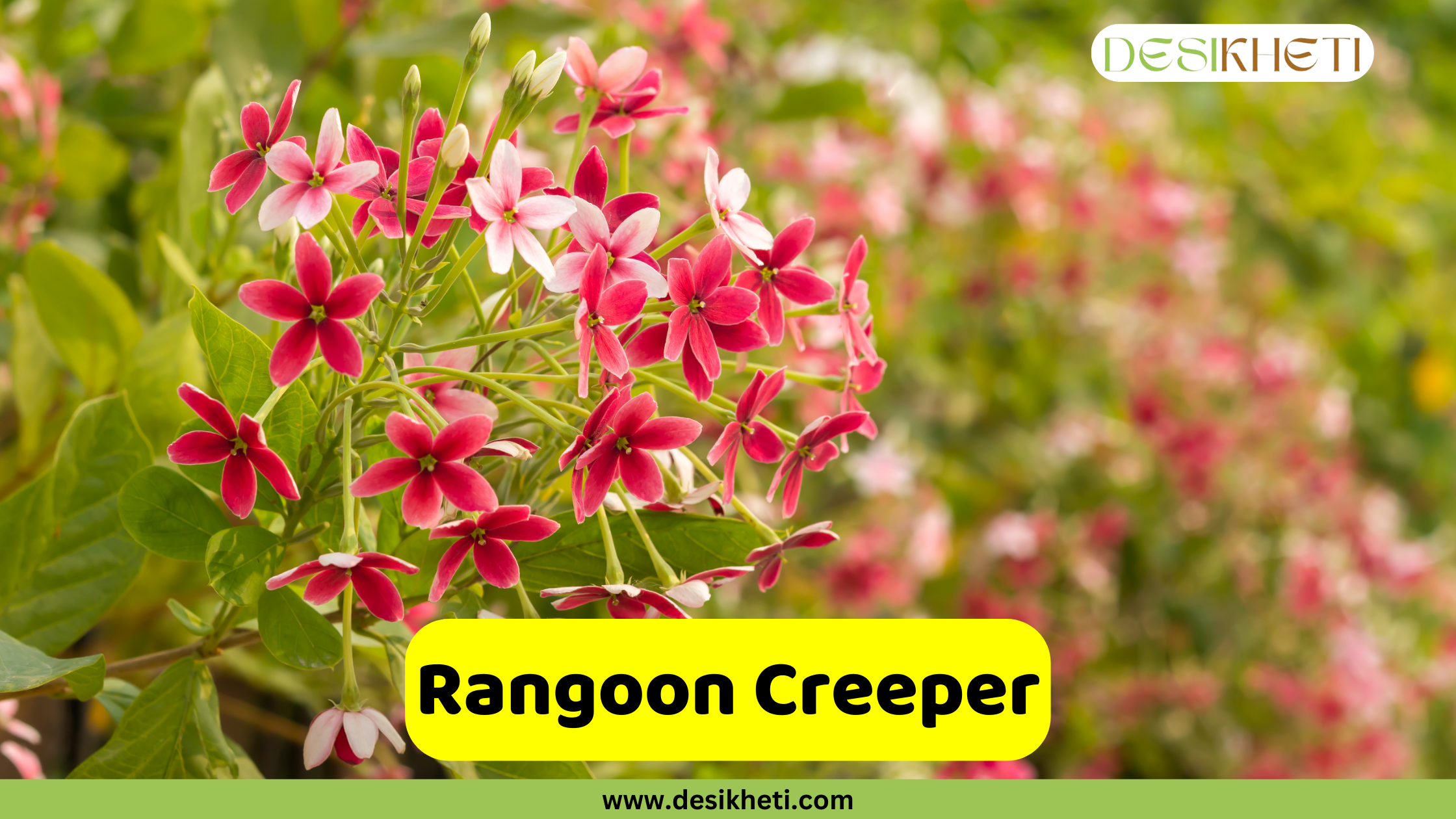
Botanical Name: Quisqualis indica
Rangoon Creeper is a fast-growing climber with highly fragrant flowers that change color from white to pink and then to red as they mature. It blooms during summer and monsoon, making it a favorite in Indian gardens. The plant prefers full sun to partial shade and loamy, well-drained soil.
Uses and Benefits:
- Ideal for pergolas, verandahs, and entrance arches
- Adds fragrance and color to traditional and tropical gardens
- Attracts bees and butterflies
Jasmine
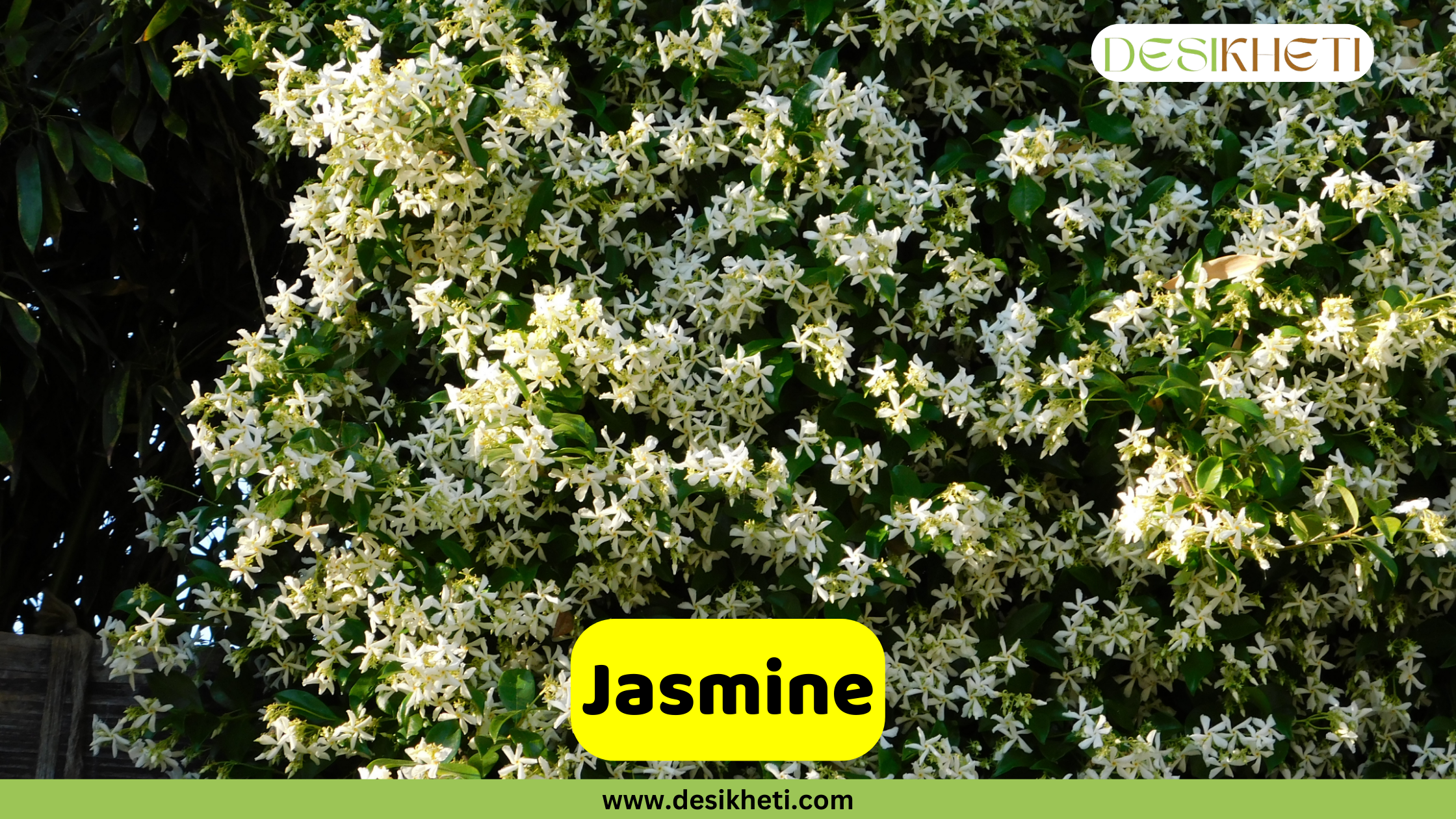
Botanical Name: Jasminum spp.
Jasmine is renowned for its small, intensely fragrant flowers that are typically white or yellow. Many species are climbing varieties used extensively in Indian gardens and temples. Jasmine blooms mainly from late spring to summer.
Uses and Benefits:
- Perfect for railings, arches, and balcony trellises
- Used in temple gardens and aromatic garden corners
- Flowers are used for garlands, perfumes, and traditional rituals
- Attracts pollinators and enhances garden fragrance
Climbing Rose
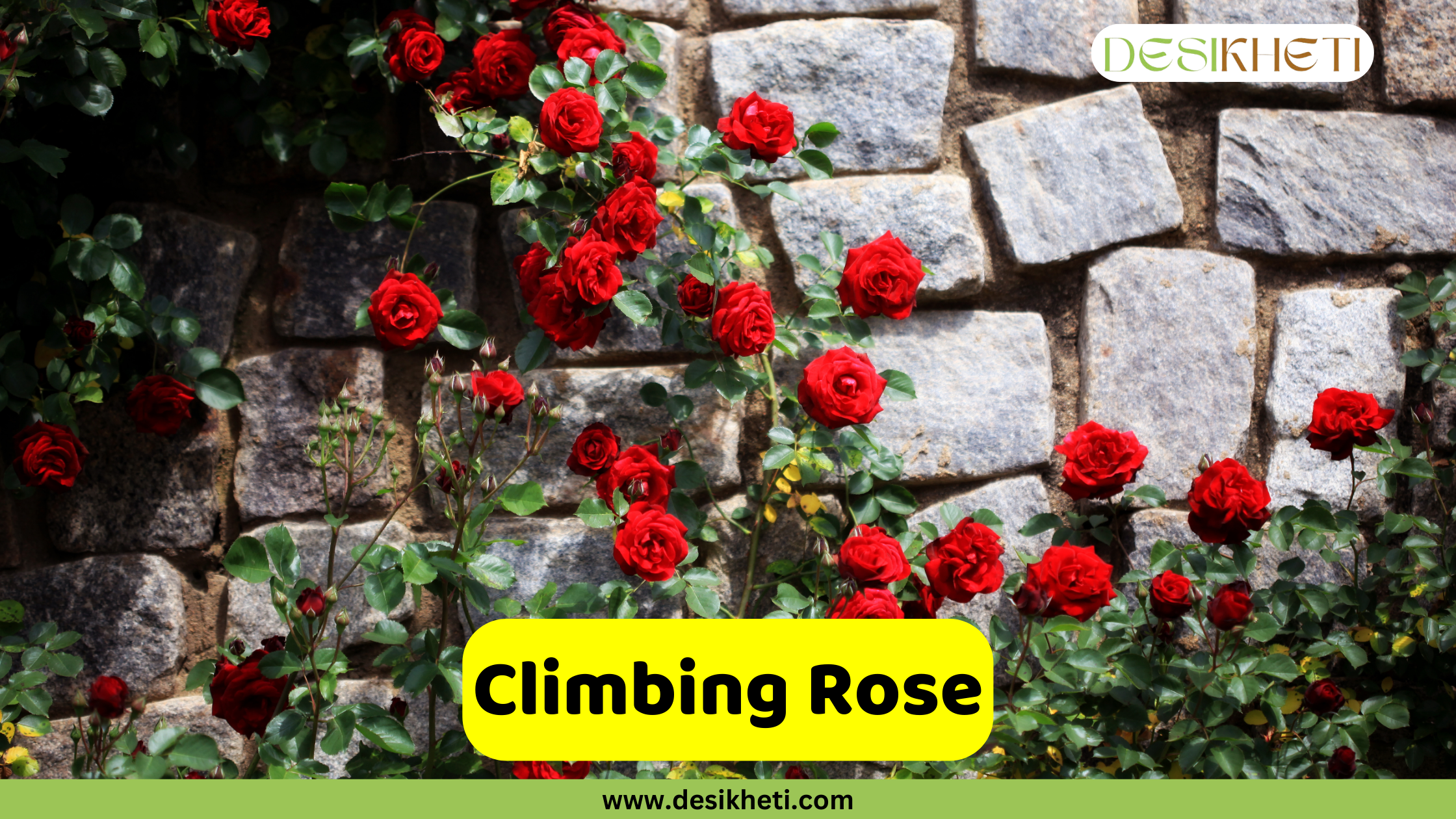
Botanical Name: Rosa spp.
Climbing Roses combine the beauty of rose blooms with a vertical growth habit. They bloom throughout spring and summer, requiring sturdy support and proper trying to grow well. These roses prefer full sun and loamy, rich soil.
Uses and Benefits:
- Ideal for pergolas, arbors, and wall trellises
- Adds vintage charm to gardens
- Produces fragrant flowers for bouquets and decoration
Cup-and-Saucer Vine
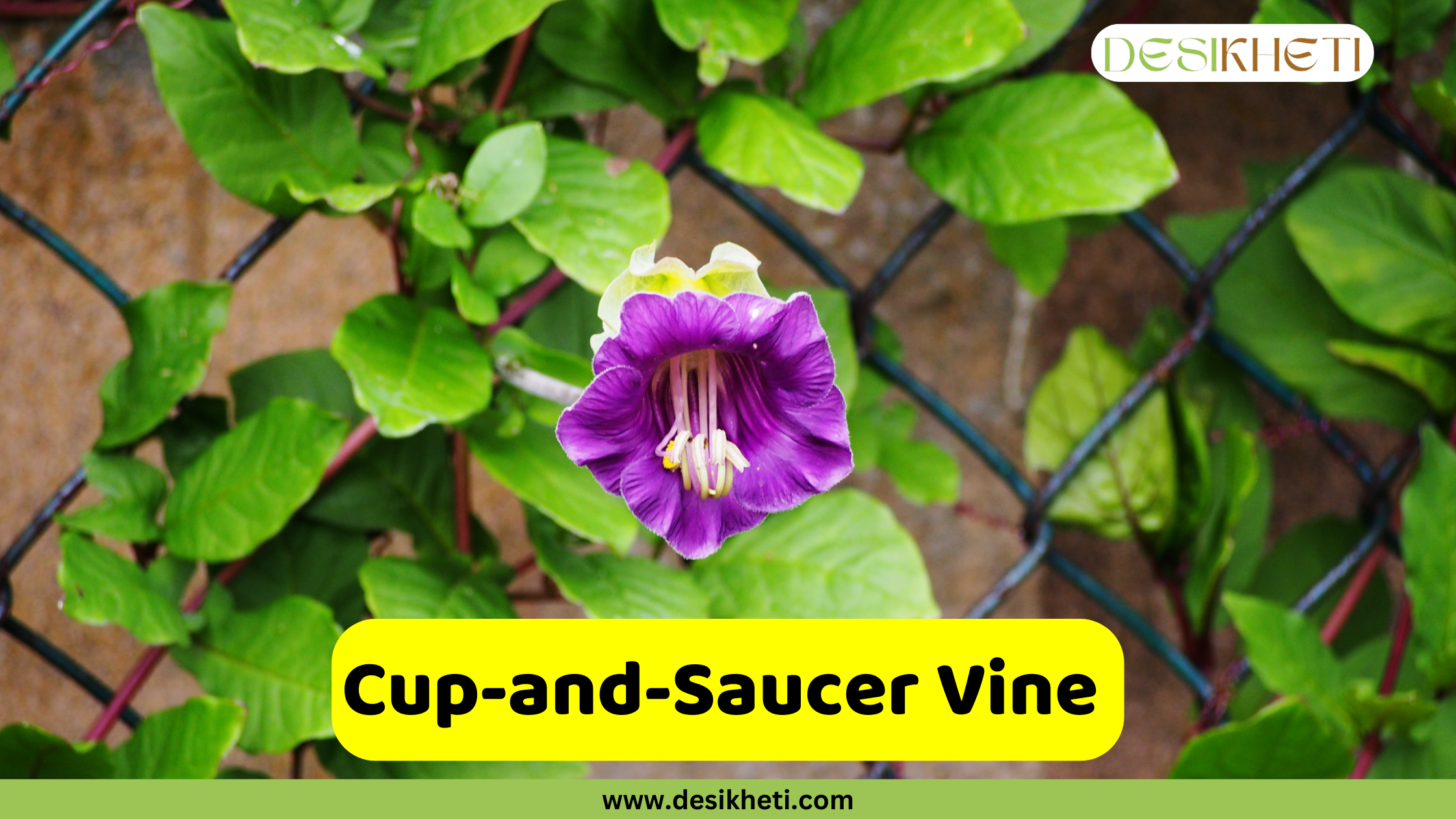
Botanical Name: Cobaea scandens
The Cup-and-Saucer Vine gets its name from its bell-shaped flowers and saucer-like calyx. It is a fast-growing climber that blooms in purple or white from summer to autumn. The plant prefers full sun and well-drained, fertile soil. Its vigorous growth quickly covers trellises, walls, or arches with lush greenery and showy flowers.
Uses and Benefits:
- Ideal for arches, walls, and decorative trellises
- Provides quick green cover and floral appeal
- Attracts pollinators such as bees and butterflies
- Easy to grow and maintain with regular pruning
Flowering Climbers That Thrive in Full Sun
- Bougainvillea
- Morning Glory
- Wisteria
- Trumpet Vine
- Allamanda
- Rangoon Creeper
- Climbing Rose
Flowering Climbers for Partial Shade
- Clematis
- Honeysuckle
- Passion Flower
- Mandevilla
- Black-eyed Susan Vine
- Carolina Jessamine
Fragrant Flowering Climbers
- Jasmine
- Honeysuckle
- Carolina Jessamine
- Rangoon Creeper
- Climbing Rose
- Wisteria
Flowering Climbers That Attract Pollinators
- Clematis
- Morning Glory
- Honeysuckle
- Trumpet Vine
- Black-eyed Susan Vine
- Rangoon Creeper
- Allamanda
- Jasmine
- Climbing Rose
Fast-Growing Flowering Climbers
- Morning Glory
- Trumpet Vine
- Bougainvillea
- Rangoon Creeper
- Black-eyed Susan Vine
Flowering Climbers Suitable for Pots, Containers, or Small Spaces
- Clematis
- Mandevilla
- Black-eyed Susan Vine
- Jasmine
- Passion Flower
- Allamanda (in large pots with support)
Flowering Climbers for Walls, Fences & Pergolas
- Bougainvillea
- Trumpet Vine
- Rangoon Creeper
- Wisteria
- Climbing Rose
- Passion Flower
- Clematis
- Allamanda
- Carolina Jessamine
Flowering Climbers with Showy or Ornamental Flowers
- Clematis
- Wisteria
- Passion Flower
- Mandevilla
- Allamanda
- Climbing Rose
- Cup-and-Saucer Vine
- Black-eyed Susan Vine
Seasonal Blooming Flowering Climbers
- Wisteria – Spring to early summer
- Clematis – Spring and summer
- Jasmine – Late spring to summer (varies by species)
- Carolina Jessamine – Early spring
- Rangoon Creeper – Summer and monsoon
- Black-eyed Susan Vine – Summer to early autumn
- Morning Glory – Summer
Tropical & Indian Garden Favorite Flowering Climbers
- Rangoon Creeper
- Bougainvillea
- Jasmine
- Allamanda
- Mandevilla
Growing and Care Tips for Flowering Climbers
- Choose the Right Spot: Most flowering climbers prefer full sun to partial shade. Check the specific needs of each plant before planting.
- Support Structures: Use trellises, pergolas, fences, or wires to support climbing plants and encourage vertical growth.
- Soil and Drainage: Ensure well-drained, fertile soil enriched with compost or organic matter for best results.
- Watering: Water regularly, especially during dry spells, but avoid waterlogging. Established climbers may tolerate drought better.
- Pruning: Regular pruning after flowering helps maintain shape, encourages new growth, and improves air circulation.
- Fertilization: Apply balanced or flowering plant fertilizers during the growing season to enhance bloom production.
- Pest and Disease Management: Monitor plants regularly for pests such as aphids, mites, or fungal infections, and treat them early using organic or chemical methods as needed.
Flowering climbers are more than just ornamental additions—they bring life, color, and purpose to any garden or balcony. Whether it’s the vibrant Bougainvillea, the fragrant Jasmine, or the striking Passion Flower, these plants not only beautify your space but also attract beneficial pollinators and offer natural shade and privacy.
With the right selection based on your region and space, and a little care, you can enjoy a garden that blooms beautifully through the seasons. Plant your favorite flowering climbers today and transform your surroundings into a lush, living tapestry.
FAQs on Flowering Climbers
1. What makes Bougainvillea special?
A. Bougainvillea is special for its vibrant, paper-like bracts, drought tolerance, and ability to bloom year-round in tropical climates.
2. What is the common name for Clematis?
A. Clematis is commonly known as “Traveller’s Joy” or simply “Clematis Vine.”
3. What is the speciality of Morning Glory?
A. Morning Glory flowers open in the morning and close by afternoon.
4. What is Wisteria famous for?
A. Wisteria is famous for its fragrant, cascading flowers and dramatic, pendant-like blooms in shades of purple, white, or blue.
5. Is Wisteria poisonous to humans?
A. Yes, all parts of the Wisteria plant, especially the seeds and pods are toxic if ingested.
6. What is Wisteria used for?
A. Wisteria is primarily used for ornamental purposes, especially on arbors, pergolas, and trellises due to its aesthetic appeal.
7. What are the special features of the Trumpet Vine?
A. Trumpet Vine produces bright, trumpet-shaped flowers that attract hummingbirds. It’s a vigorous grower, ideal for covering large spaces.
8. What are the benefits of Black-Eyed Susan Vines?
A. Black-Eyed Susan Vines are easy to grow, add bright color to vertical gardens, and attract pollinators like bees and butterflies.
9. What is another name for the Black-Eyed Susan Vine?
A. It is also known as Thunbergia alata.
10. Does Carolina Jessamine smell good?
A. Yes, Carolina Jessamine has a pleasant, sweet fragrance, especially noticeable in spring.
11. Is Carolina Jessamine poisonous?
A. Yes, all parts of the Carolina Jessamine plant are toxic if ingested, particularly to children and pets.
12. Is Allamanda poisonous?
A. Yes, Allamanda is toxic if ingested and may cause skin irritation due to its milky sap.
13. Is Rangoon Creeper fragrant?
A. Yes, Rangoon Creeper (Quisqualis indica) produces highly fragrant flowers, especially in the evening.
14. Are Jasmine and Mogra the same?
A. Mogra is a type of Jasmine, specifically Jasminum sambac, known for its strong fragrance.
15. What does a Jasmine flower symbolize?
A. Jasmine symbolizes purity, love, and beauty, and is often associated with spirituality and good luck in many cultures.
16. What is another name for Cup and Saucer Vine?
A. The Cup and Saucer Vine is also known as Cobaea scandens.
